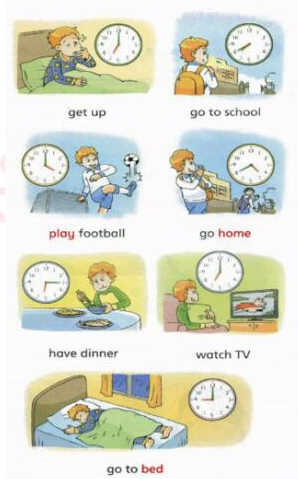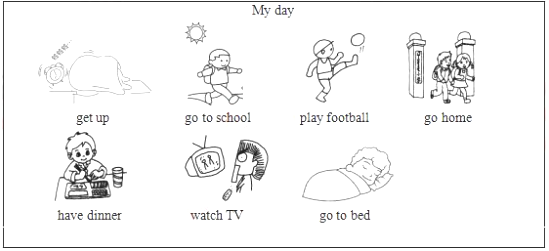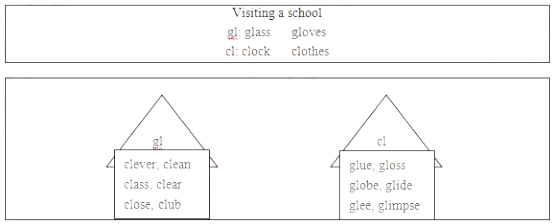2019下半年教師資格證面試考試在2020年1月4日-5日進行,2019下半年小學英語教師資格證面試真題及答案1月4日公布。按Ctrl+D收藏本頁面,獲取本次小學英語教師資格證面試真題。
試講題目1:I’ve got a new friend
2.內容:
Dear Lucy,
Thank you for your letter. Happy birthday to you! I’m ten now. I will be eleven next year.
Beijing isn’t cold now. It’s warm.
I’ve got a new friend, too. Her name is Mengmeng. She’ got short hair. She’s very clever. Here is a photo of Mengmeng and me. We were at the Great Wall.
Love,
Amy
3.基本要求:
(1)講解劃線詞匯,聽說教學;
(2)配合教學內容適當板書,要求結合簡筆畫教學;
(3)朗讀全文;
(4)全英授課。
答辯題目
1.How can teachers improve their ability to manage the class?
2.你同意“沒有不合格的學生,只有不合格的教師”這句話嗎?
【教案】
I’ve got a new friend
Teaching aims:
Knowledge aims:
Students can read and recognize some key words and phrases, such as “short hair” and “clever”.
Students can master the sentence structures “She’s got ......” and “She’s ......”.
Ability aim:
Students can describe their new friends by using the target words and sentence patterns in their daily life.
Emotional aims:
Students can enhance their interest of learning English.
Students can realize the importance of having friends and loving their friends.
Key and difficult points:
Key Point: How to describe their new friends by using the target words and sentence patterns.
Difficult Point: How to realize the importance of having friends and loving their friends.
Teaching procedures:
Step 1: Warming-up
1. Greetings.
2. Invite students to sing a song named Mary Had A Little Lamb. The song is like this:
Mary had a little lamb, little lamb, little lamb,
Mary had a little lamb, its fleece was white as snow.
And everywhere that Mary went, Mary went, Mary went,
and everywhere that Mary went, the lamb was sure to go.
Then ask students a question, “The little lamb is Mary’s friend. Do you know how to introduce your friend?”
Step 2: Pre-listening
1. Draw a picture of a famous cartoon character named Curnane.
2. Teach the key words and phrases, such as “short hair” and “clever”.
Step 3: While-listening
1. Extensive listening
Read the passage for students and ask them what the tape is about. Then invite one student to answer. (It’s a letter from Amy to Lucy.)
2. Intensive listening
Play the tape for the second time and ask students several questions:
“Who is Amy’s best friend? What’s she like?”
“Where were they?”
Then ask two volunteers to write his or her answer on the blackboard. And teach the new sentence patterns about how to introduce new friends: “She’s got _______. She’s _______.”
Play the tape for the third time and ask students to repeat after the tape.
Step 4: Post-listening
Let students work in pairs. Ask students to draw a picture of their new friends and introduce him or her by using the key words and sentence patterns. Five minutes later, invite some students to share and give some comments.
Step 5: Summary and Homework
Summary: Invite a student to be a little teacher and summarize today’s lesson.
Homework: Ask students to introduce their new friends to their parents.
Blackboard design:

Teaching reflection
試講題目2.題目:My day
2.內容:

3.基本要求:
(1)講解詞匯;
(2)設計與學生的互動環節,要求運用游戲進行操練;
(3)情境教學;
(4)全英授課。
答辯題目
1. Please talk about your understanding about teachers.
2. What kind of head teacher do you admire most? What should you do?
(注:以上圖片節選自譯林版教材四年級下冊第三單元19頁)
【教案】
My day
Teaching aims:
Knowledge aim:
Students are able to pronounce and understand the new phrases “get up”, “go to school’, “play football”, “go home”, “have dinner”, “watch TV”, and “go to bed”.
Ability aim:
Students can describe their daily activities by using the key words.
Emotional aims:
Students will enhance their interest and confidence in learning English.
Students can know the importance of valuing time.
Key and difficult points:
Key Point: How to master the new phrases “get up”, “go to school’, “play football”, “go home”, “have dinner”, “watch TV”, and “go to bed”.
Difficult Point: How to talk about their daily activities correctly and freely in their daily life.
Teaching procedures:
Step 1: Warming-up
1. Greetings.
2. Invite students to sing a song named Walking. The song is like this:
Walking, walking, walking, walking.
Jump jump jump, jump jump jump.
Running, running, running, running, running, running.
Now, let’s stop.
Up and down.
Then ask students a question, “What is the song about?” And tell students today’s topic is also about daily activities.
Step 2: Presentation
Set a situation: Mike is our friend. Do you know what Mike does on a day?
1. Draw some pictures of Mike’s daily activities on the blackboard, asking students what they are.
2. Explain the new phrases by doing actions.
3. Ask students to read the phrases after the teacher.
Step 3: Practice
1. Missing game
Ask students to close their eyes and cover one word. Then they can open their eyes. And they should guess which phrase is missing and try to spell it.
2. Sharp eyes
Prepare some pictures of these daily activities and change them quickly. Students are required to recognize what it is and read the phrase loudly.
Step 4: Production
Have a competition : Say and do
Let all the students stand up. Then make some instructions such as “Get up” and students need to do the instructions as quickly as they can. If the student does the wrong action or responds slowly, he or she needs to sit down. The student who still stands in the end is the winner and will get a big prize.
Step 5: Summary and Homework
Summary: Invite a student to be a little teacher and summarize today’s lesson.
Homework: Ask students to draw a picture of their daily activities and share it with their parents.
Blackboard design:

Teaching reflection
試講題目3.題目:Visiting a school
2.內容:

3.基本要求:
(1)設計為語音課;
(2)運用韻律進行授課,多做游戲活動課堂氛圍;
(3)全英授課,試講時間10分鐘。
答辯題目1.如果學生沒完成你的作業,還找借口,你怎么處理?
2.對于板書,你覺得有哪些優化的地方?
【教案】
Visiting a school
Teaching aims:
Knowledge aims:
Students will master the pronunciations and differences in the letter groups “gl” and “cl”.
Students can grasp the meanings of some words like “glass”, “gloves”, “clock” and “clothes”.
Ability aims:
Students will know how to pronounce “gl” and “cl” in words.
Students will improve their speaking ability through chant.
Emotional aims:
Students will improve their interest in learning English, and be fond of taking part in all kinds of class activities.
Students can learn to give their parents a hand in doing housework.
Teaching key and difficult points:
Key point: to master the pronunciations of these two letter groups, and know how to pronounce them in words.
Difficult point: to discriminate these two letter groups in speaking, and improve their confidence in learning English.
Teaching procedures:
Step 1: Warming-up
1. Greetings. Talk about the weather.
2. Share a riddle with students:
I have a big round face.
I have no legs but I can walk.
I have no mouth but I can say “tick-tock”, “tick-tock”
Ask the answer of this riddle (clock), and tell students that we are going to learn something about the related pronunciation.
Step 2: Presentation
1. Present the words with the help of pictures on the screen.
2. Let students find the similarities among the words and share their answers. Then let them listen to the tape and find out the differences of these two letter groups in pronunciation.
3. Explain the pronunciation rule: if we meet the letter groups of “gl” and “cl” in words, we often pronounce [gl] and [cl] respectively. Then ask students to pay attention to the differences by watching the teacher’s mouth and imitate.
Step 3: Practice
Play a game called Send Words Home. Present the words on the PPT, and draw two houses of the letter groups “gl” and “cl” on the blackboard. Five students in a group are to have a discussion in three minutes about where the words on the PPT belong to. Then invite some students to the front to write down their answers, and read them aloud. Check answers and give evaluations.
Step 4: Production
Ask students to make a chant based on the words that we learned today. Work in groups of four in five minutes. Later, invite some students to share their chants. For example:
Clock, clock, clock on the wall
Clothes, clothes, clothes on the bed
Glass, glass, glass on the window
Gloves, gloves, gloves on the hands
Give evaluations and encouragements.
Step 5: Summary and Homework
Summary: ask a student to conclude the content of today's lesson, then tell them to form a good habit of giving parents a hand in housework.
Homework: let students share the chant with their parents, and try to create a story based on the words that we have learned today.
Blackboard design:

Teaching reflection
下載233網校APP,可方便及時獲取小學英語教師資格證面試真題。

真題推薦:歷年教師資格證面試真題>>>
教師資格證面試如何快速通關?233網校還原面試情景現場,助你一舉攻下“結構化面試+試講+答辯”三大內容,實戰通關!試聽課程>>
答疑解惑:添加小編微信個人號【ks233wx3】,或關注微信公眾號【jiaoshi_233】搜索微信公眾號“233網校教師資格證考試”,關注即可一對一答疑解惑!

